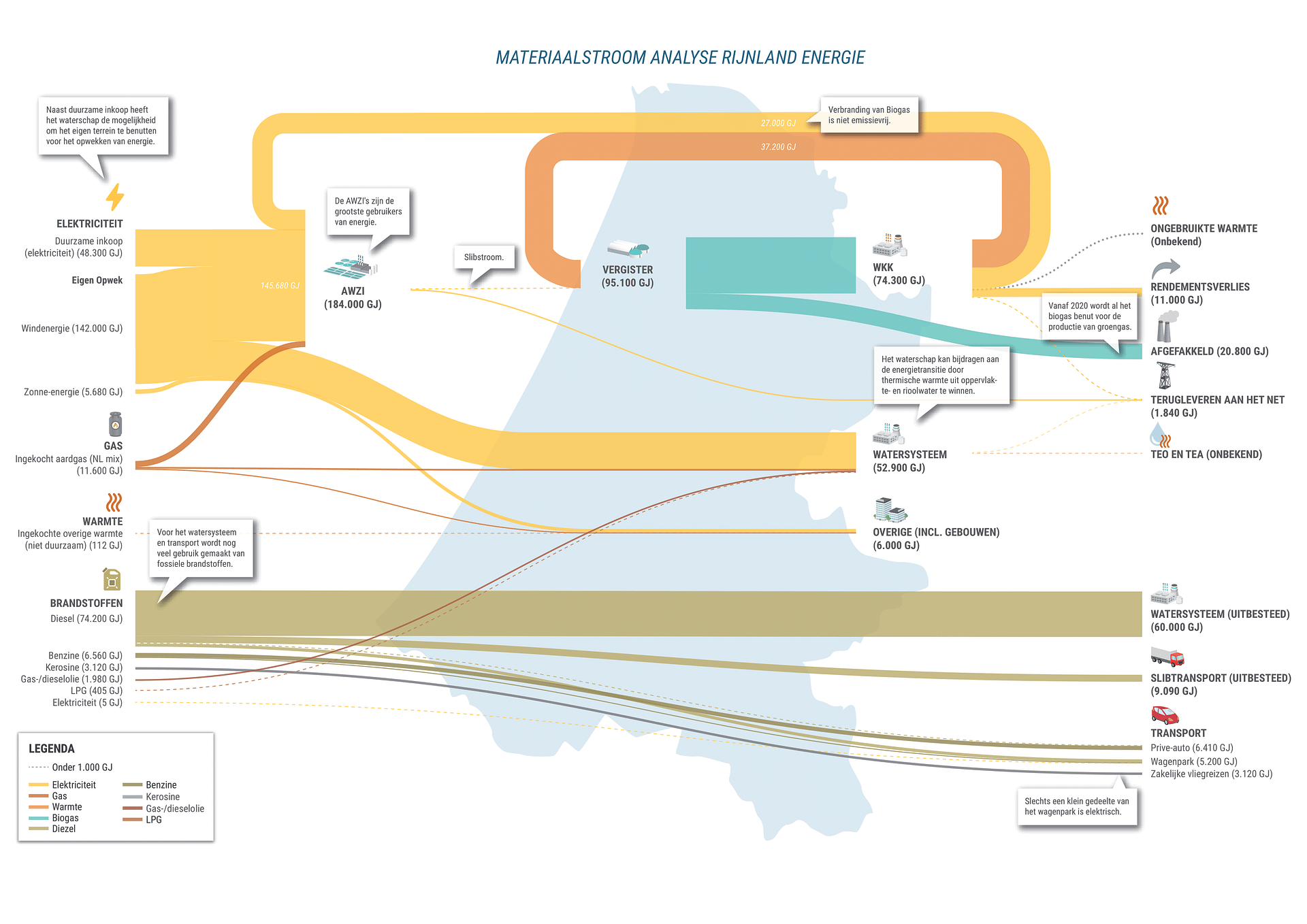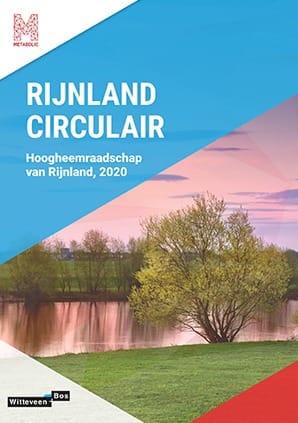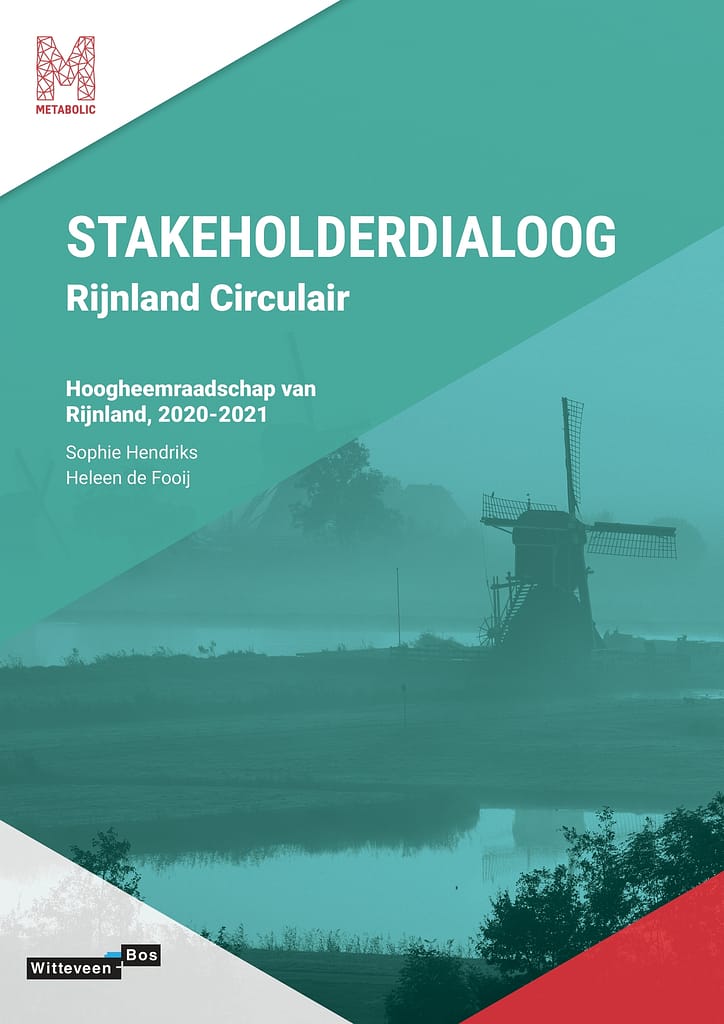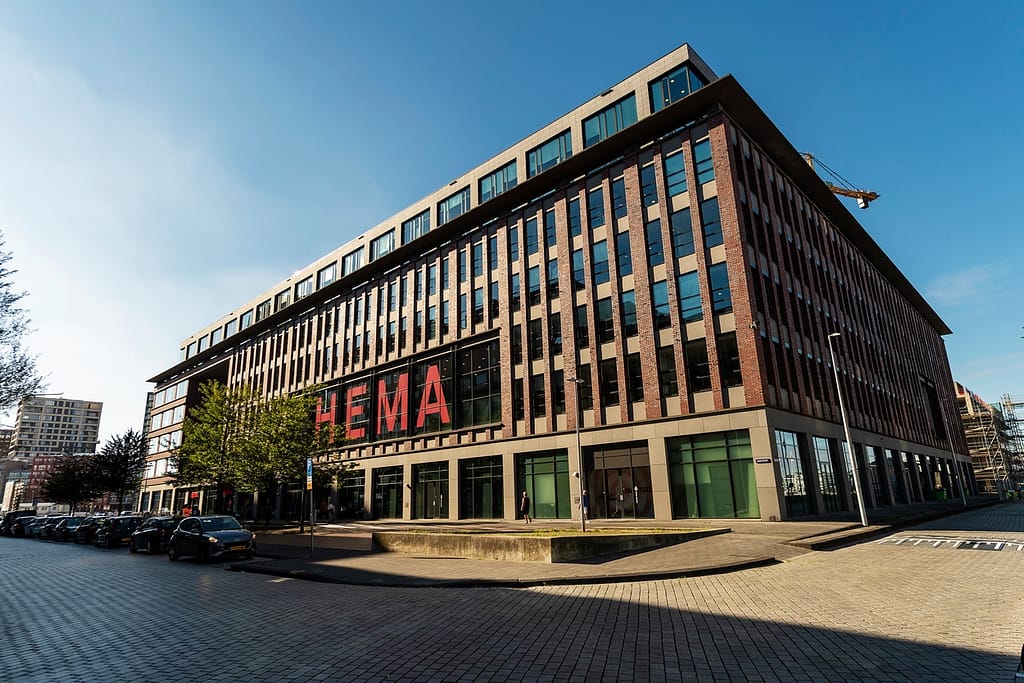Building a circular strategy for Water Authority Rijnland
Identifying leverage points and potential measures for a circular water authority, based on a data-driven current state assessment and stakeholder dialogue.
Metabolic identified circular strategies for Water Authority Rijnland, which works in two provinces in the Netherlands. While the authority aims to become fully circular before 2050, it needs more insight as to how to do so. Through a baseline assessment and collaboration with stakeholders, we identified opportunities where the water authority can take steps.
- Partner: Wittenveen + Bos
- Client: Hoogheemraadschap van Rijnland
- Date: April 2021
Towards a circular water authority
Dutch water authority Rijnland is committed to becoming fully circular before 2050. To do so, more insight is needed into what the implications and opportunities of the circular economy are for Rijnland, what a circular water authority could look like, and how to get there.
A circular strategy based on a data-driven baseline analysis
We started by analyzing the current system in Rijnland with a baseline analysis of the district, mapping out all energy, water, and materials flows, along with their related climate impacts. This allowed us to identify which processes and flows align with the goals of a circular and sustainable water board. These findings helped us set concrete goals and potential measures to achieve them. Together with Rijnland’s experts and sector partners, we explored and analyzed these potential measures on their impact and feasibility. Because collaboration with regional stakeholders is essential to become circular, a dialogue was held with 10 relevant stakeholders. This provided valuable insights into the regional trends, initiatives, and ambitions in regards to circularity, and can be used as a stepping stone for future collaboration.
Opportunities for a circular and sustainable water authority
Based on our assessment, we identified leverage points and opportunities for Rijnland to transition to a circular and sustainable water authority. One such example are the wastewater treatment plants, which are responsible for 57% of Rijnland’s greenhouse gas emissions and the site of many valuable resources that are not recovered. Looking at the treatment process through a circular lens provides opportunities to cut down emissions, recover nutrients and resources, all while continuing to produce high-quality water.
Other points of impact are the management of organic flows such as sludge, cuttings, and dredge; asset management where Rijnland could benefit from regional collaboration; and potential energy production. There are opportunities to expand production of solar and wind energy and to research newer technologies, such as aquathermal and hydrogen.
Furthermore, the report provides recommendations on the organizational structure and governance needed to support a circular approach.













